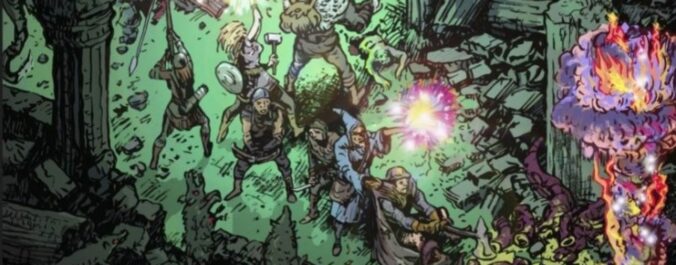Here’s the initial proposed program structure and adventure session structure, inspired in part by West Marches style gameplay.
General Principles
- No regularly scheduled day or time — Games are schedule ad hoc as needed
- A meta-game scheduling mechanism with a large pool of players — Perhaps GroupMe or just manual emails which recruit from a large pool of players.
- No regular party — The shared GMs keep a list of potential players and when a game slot opens up, they invite whom they will (sometimes inviting more players than slots, players are accepted on a first-come, first-served basis depending on when they reply).
- No regular plot — GMs will run standalone, self-contained adventures that don’t alter the world
- Mixed party levels — All new characters start at Level 1. Over time, and new players join in, or old characters max out at 10th level, any given party may have characters which span a variety of levels. Due to the nearly-static Health (Hit Point) and damage levels, having mixed levels in one party should not pose a problem.
- Shared Cloud Drive with Latest Character Sheets — We will use form-fillable character sheets and upload the latest digital version after each session to a shared drive location.
GM Responsibilities
- GMs assemble three low-prep adventures — GMs ideally should have some combinations of three one-page dungeons and or some adventure seeds or quickstart improv situations in order to run games. When a game comes up that needs a GM, the GM can blow the dust off of some pre-selected adventure ideas and be up and running in just 15 minutes. GMs should do this prep before the opportunity to run a game arises.
- GMs stay in their own map areas and don’t change the world — The beauty of a large, unexplored map is that each GM’s adventure can explore an entirely new area. GMs should take their games to new places, so they don’t have to look up and understand NPCs and events that have happened in another GM’s game in that area. GMs should also not introduce plot elements that change the world. Avoid introducing things like the new threat of a world extinction event, killing off major NPCs in the safe town, killing a named, known demigod, or changing the geography of the map. By staying clear of these things, GM’s can run their game without having to scout adventure logs and worry about keeping up with evolving lore that develops in other GM’s games.
- GMs restrict treasure and magic items to reasonable limits — We will need to define this as we learn the system and currency economy.
- GMs log post-game session summaries — After the game, the GM should white a short paragraph in a shared adventure log briefly noting (1) the name of the adventure (and the specific one-page dungeon adventure if one was used), (2) what changed on the map, and (3) which player characters were in the session. Should be very short and does not need to contain all the details of what happened in the adventure. For the shared map, use a shared Owlbear.rodeo ‘room’ and put a label on the new adventure location you used.
Adventure Structure
- Adventurers are part of a Guild or Adventuring Society — In our case, the Blackmarsh Explorers Guild.
- All adventures begin from a safe, unchanging location — In our case, the town of Tell Qa on the edge of unexplored lands in Drimkaz; PCs never adventure in town although they may carouse and spend money there.
- Characters of absent players are healing, carousing, or otherwise occupied — A safe and unchanging town ensures a sanctuary for absent players, and pushes adventurers outside the town walls to follow the Guild’s call to adventure. Longer term, we may add a custom “I’m Back” move to give backstory for absent character events.
- Adventures happen in an unexplored area of a map — The core activity of characters is to explore a fantasy wilderness referencing a GM-maintained map. Each session begins with characters picking a new area of the map to explore, perhaps after hearing an adventure hook, rumor, or a specific exploration mission they’ve received from their Guild.
- GM will provide a hook pointing to adventure — This can be a new rumor, a treasure map, or other story nudge to get them started. Over time, if players are demonstrably proactive, you might not even need this — each session the players just pick an unexplored map area, and the GM places their adventure in that location.
- Characters venture to the target location — Players have agency on where they go on the map. Optionally, the GM can provide random encounters on the way there.
- GM provides mystery and adventure at the destination map location — GM provides a short adventure (whether a 1 page dungeon or improvised; 5 room dungeon is about right). GM should be prepared to fast forward to the final scene if needed to get done in time.
- After the adventure, characters return to their home base — At the end of each session, characters return to their home base (In this case, Tell Qa). This journey can be told in montage form to narrate events, or even just be ignored with the assumption you made it back safely, if you’re short on time. Next session you will always be back in town. Longer term, we may add a custom “Journey Home” move to cover the way back to the home base.
- After the game, update core documentation — Share updated versions of character sheets and the area map and enter a log of characters and a super-simple summary of the adventure to the shared adventure log.




Recent Comments